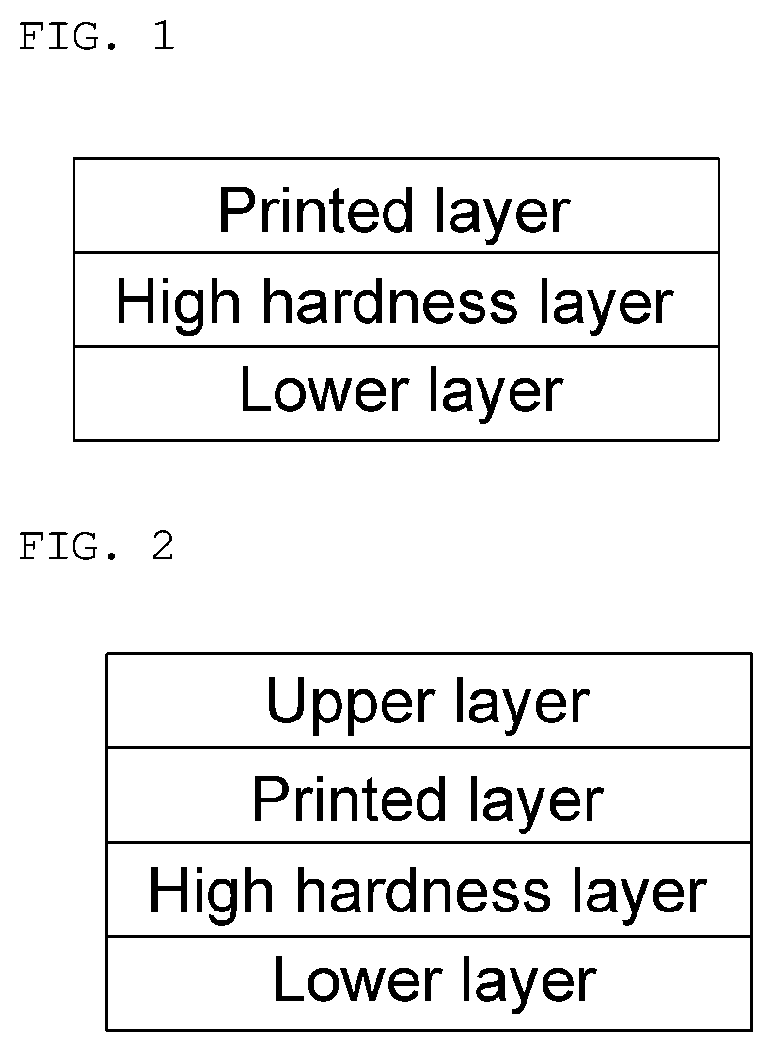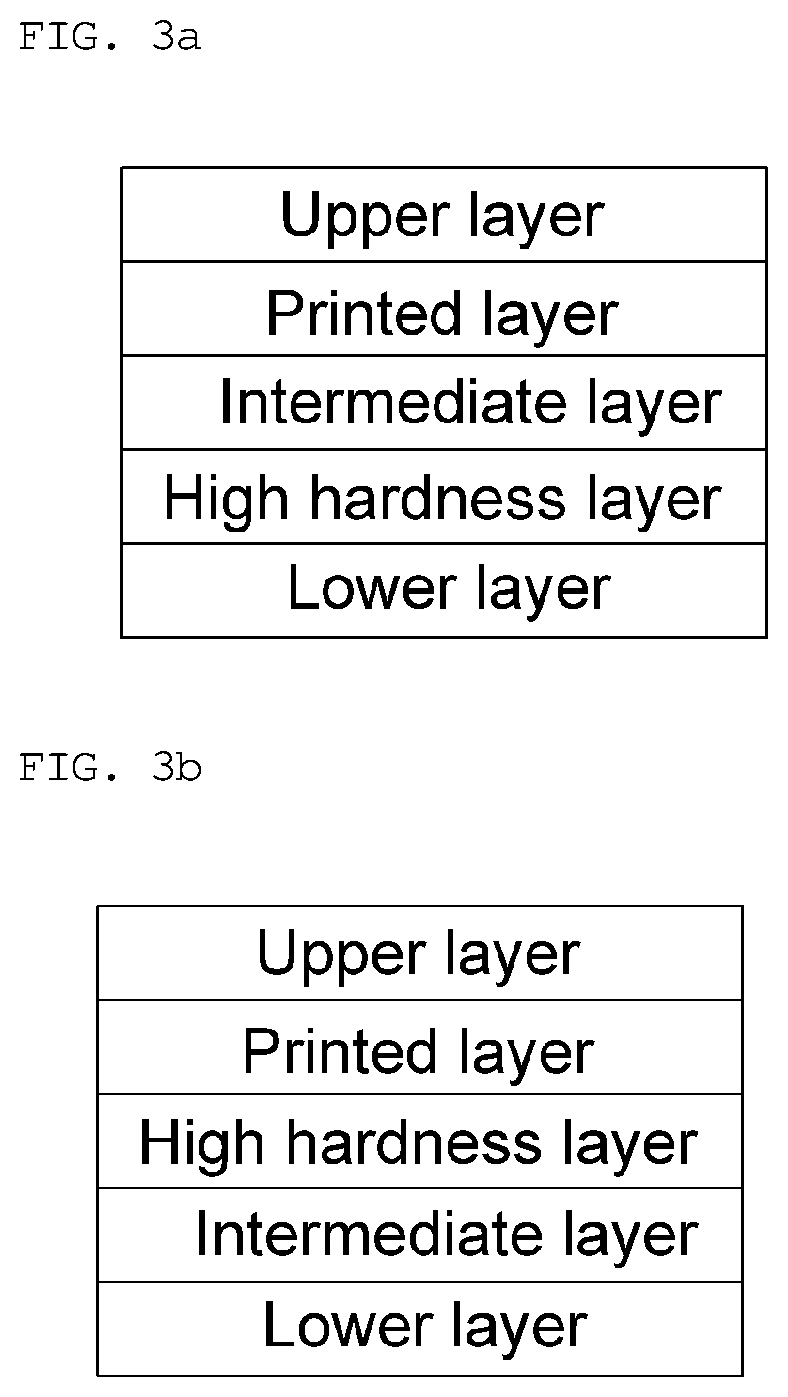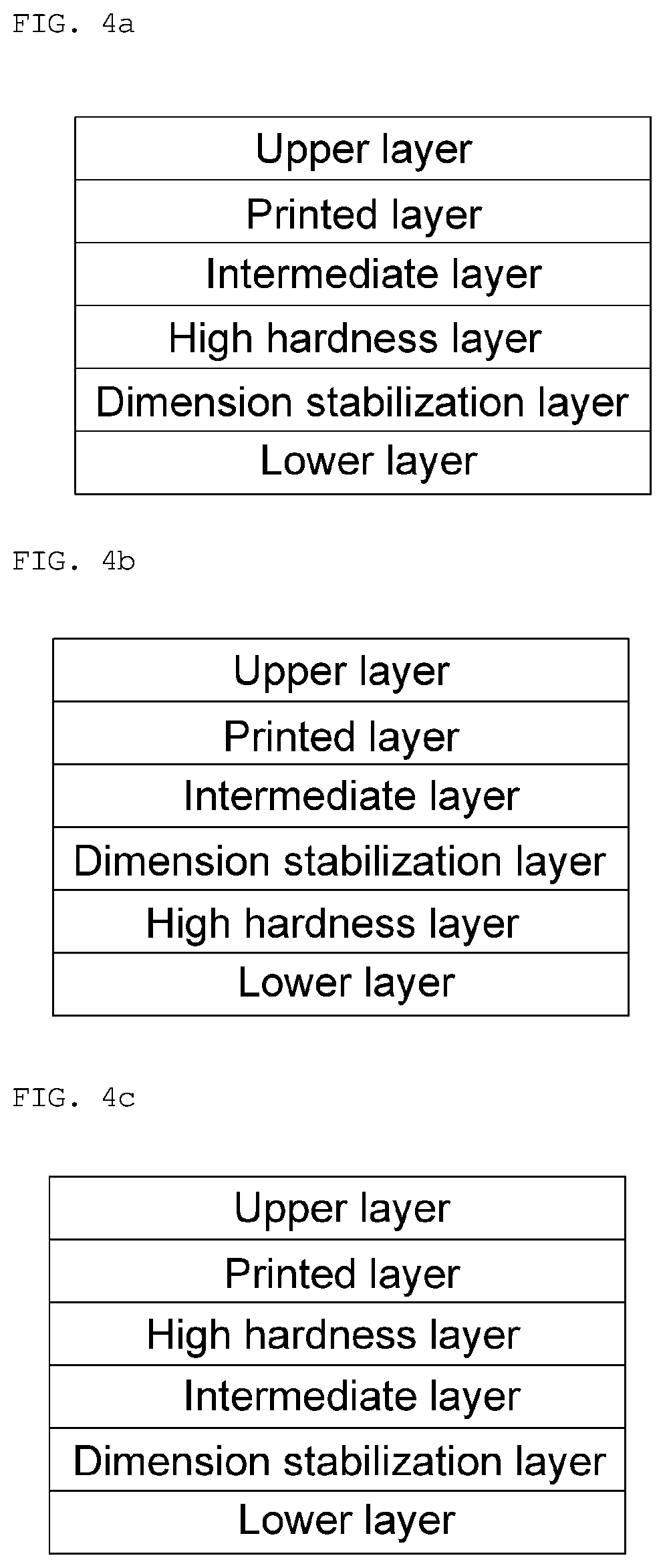Anti-transfer floor tile and method for manufacturing same
a technology of floor tiles and trays, applied in the field of anti-transfer floor tiles, can solve the problems of increased work time and labor costs, inability to apply a method to products, and the flooring material may be closely contacted with the floor, and achieves excellent dimensional stability and anti-curling properties, high hardness layer, and high mechanical strength.
- Summary
- Abstract
- Description
- Claims
- Application Information
AI Technical Summary
Benefits of technology
Problems solved by technology
Method used
Image
Examples
##ventive example 1
Inventive Example 1
[0111]Each layer forming the floor tile was prepared by a calendering scheme. Corresponding components of each layer as shown in Table 1 below were mixed in the composition ratio as shown in Table 1 below, and the mixed raw material was primarily gelled uniformly by heating and pressing, and then secondarily gelled by an extruder or a mixing roll.
[0112]
TABLE 1HighUpper PrintedhardnessClassificationlayerlayerlayerLower layerPVC100100100100Filler02010060Plasticizer25101030OthersSuitableSuitableSuitableSuitablequantityquantityquantityquantity
[0113][Unit: Parts by Weight]
[0114]Next, the mixture was put into a calender roll and completely gelled, and then a semi-finished product in the foil of a sheet was manufactured through a calendering process. The semi-finished product was wound in a roll form, and then placed on a continuously rotating conveyor in-line according to the lamination order, and each layer was sequentially heat-fused. Specifically, each layer wound in...
experimental example 1
[0118]Surface Transfer Phenomenon Examination
[0119]In order to examine the degree of surface transfer of the tiles of Inventive Example 1 and Comparative Examples 1 and 2, a wave patterned hera stain was famed on an area of 1000*1000 size for each product, and then the tiles were laid on the floor, and then whether the stain is transferred to the surface was determined. The results are shown in Table 3 below.
[0120]
TABLE 3InventiveComparativeComparativeClassificationExample 1Example 1Example 2SurfaceNonePartiallyDistinctivelytransferrecognized
[0121]According to Table 3, it was confirmed that the surface transfer phenomenon of Inventive Example 1 was improved compared to Comparative Examples 1 and 2.
experimental example 2
[0122]Dimensional Stability Examination
[0123]In order to examine the dimensional stability of the tiles of Inventive Example 1 and Comparative Examples 1 and 2, each product was heated at 80° C. for 6 hours and then cooled at room temperature for 1 hour, according to the test method for length change by heating pursuant to KS M 3802, and a dimensional change rate of each product in longitudinal and transverse directions was measured. The results are shown in Table 4 below. Herein, the lower the dimensional change rate value, the better the dimensional stability.
[0124]
TABLE 4InventiveComparative ComparativeClassificationExample 1Example 1Example 2DimensionalLength0.080.110.10change rate (%)Width0.060.090.08
[0125]According to Table 4, the dimensional stability of Inventive Example 1 was found to be superior to Comparative Examples 1 and 2.
PUM
| Property | Measurement | Unit |
|---|---|---|
| specific gravity | aaaaa | aaaaa |
| thickness | aaaaa | aaaaa |
| specific gravity | aaaaa | aaaaa |
Abstract
Description
Claims
Application Information
 Login to View More
Login to View More - R&D
- Intellectual Property
- Life Sciences
- Materials
- Tech Scout
- Unparalleled Data Quality
- Higher Quality Content
- 60% Fewer Hallucinations
Browse by: Latest US Patents, China's latest patents, Technical Efficacy Thesaurus, Application Domain, Technology Topic, Popular Technical Reports.
© 2025 PatSnap. All rights reserved.Legal|Privacy policy|Modern Slavery Act Transparency Statement|Sitemap|About US| Contact US: help@patsnap.com



